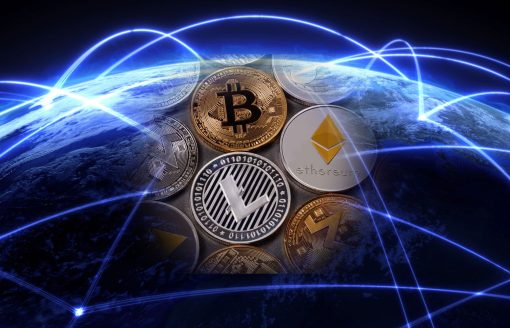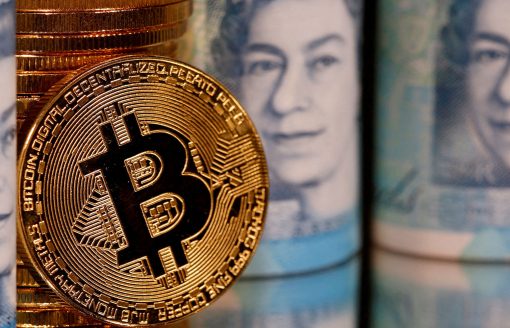Deflation, overcapacity and property woes are pushing Chinese capital toward regulated stablecoins, Hong Kong ETFs, and “digital gold.”
By CryptoCaster News Desk — September 5, 2025
China is wrestling with factory-gate deflation, policy-driven crackdowns on “price wars,” and a still-fragile property sector. That cocktail tends to push capital toward offshore, dollar-linked rails and Hong Kong’s newly regulated crypto plumbing—especially now that the U.S. has a federal stablecoin law and Hong Kong’s licensing regime is live. The result: a credible pathway from China’s slowdown to the next leg of crypto demand.
Stay in the know on crypto by frequently visiting Crypto News Today
China’s economy is not in a classic crisis, but it is in a grinding squeeze. Producer prices fell 3.6% year-over-year in June and consumer inflation was flat in July—evidence that nominal growth is scarce and balance sheets are under pressure. Retail sales and industrial output also undershot expectations in July, underscoring soft domestic demand. Beijing has cut lending rates and the required reserve ratio (RRR) by 50 bps since May and leaned on the state’s “national team” to support equities—stabilizing moves that don’t, by themselves, restart animal spirits.
CryptoCaster Quick Check:
Meanwhile, overcapacity is biting. Officials have publicly urged an end to destructive discounting and are testing consolidation tools—especially in solar, where losses have piled up and utilization is low. EVs and other heavy industries face similar dynamics. Markets have begun to price in a slow policy grind toward reduced “price wars,” but implementation will take time.
And the property sector—still the core of household wealth—has not healed. Country Garden continues to push through offshore restructuring. Evergrande has been delisted, with liquidators clawing back assets in a long, uncertain process. Confidence remains fragile.
Why this setup boomerangs into crypto rails
1) Stablecoins as a pressure valve.
When local returns look poor and the currency is under pressure, households and businesses look for dollar exposure and faster cross-border settlement. Stablecoins already play that role in parts of Asia’s trade: Russia-China commerce, for instance, has seen growing use of USDT to sidestep payment frictions. With the U.S. GENIUS Act now signed—mandating reserves and disclosures—and banks and fintechs preparing products, the legal footing for USD stablecoins is stronger than ever. That matters for demand and for the plumbing that connects Asia to dollar liquidity.
2) Hong Kong just flipped the switch.
Hong Kong’s stablecoin licensing regime took effect on August 1, with the HKMA detailing how it will accept and process issuer applications. Standard Chartered, HKT and Animoca have already formed a JV to pursue an HKD-backed stablecoin license. This is explicitly meant to be regulated infrastructure, not a free-for-all, and it gives regional capital a compliant bridge into tokenized money.
3) The RMB angle is no longer theoretical.
Beijing and Chinese tech champions are exploring offshore yuan-linked stablecoins via Hong Kong. Reporting suggests the State Council is weighing a broader plan to promote global RMB use through stablecoins—initially in trade finance. Even a narrow, B2B-first rollout would normalize token rails across China-adjacent finance.
4) The Hong Kong ETF “bridge.”
Spot Bitcoin/ETH ETFs trade in Hong Kong and continue to attract issuance and attention. Southbound Stock Connect does not yet include crypto ETFs, but HKEX keeps evolving Connect eligibility; any future opening—full or partial—would be a step-function catalyst for Mainland wealth.
5) FX psychology and risk hedges.
Yuan short bets have risen alongside growth doubts. In past episodes of yuan weakness, narratives around “digital gold” strengthened, and Chinese investors sought creative ways around domestic bans to buy crypto. That pattern may re-emerge if the currency slides or local assets underperform.
What the data is telling us right now
- Deflation & weak demand: June PPI −3.6% YoY; July CPI ~0%; July retail sales/industrial output missed forecasts. Policy support (LPR, RRR, “national team”) has stabilized markets, not re-accelerated them.
- Overcapacity squeeze: Beijing’s crackdown on “price wars” and sector clean-ups is most visible in solar (losses mounting) and EVs (price competition intensifying). Markets are betting on gradual consolidation.
- Property drag: Country Garden’s offshore overhaul is advancing; Evergrande delisted with ongoing liquidation steps.
- Stablecoin policy tailwinds: U.S. GENIUS Act now law; Hong Kong stablecoin ordinance is effective and licensing is underway; regulators (HKMA/SFC) are actively guiding markets.
How a “China → Crypto” impulse could unfold
- Base case (managed slowdown): China muddles through with targeted support; the yuan softens in fits and starts; stablecoin rails see steady growth for cross-border settlement; HK ETFs grow, but Mainland access remains gated. Crypto benefits at the margin, led by stablecoins’ utility.
- Bull case (policy unlocks): Offshore RMB stablecoin pilots scale in Hong Kong; selected institutions gain access to HK spot ETFs through tailored channels; regional family offices increase allocations. This is a structured, compliant path for Asia-sourced flows into digital assets.
- Shock case (yuan stress/property setback): A confidence shock drives more interest in USD rails and “digital gold.” Even with Mainland bans, OTC routes and offshore platforms see higher activity, as in prior drawdowns.
Keep it honest: the brakes on this thesis
- Capital controls & enforcement: Mainland bans are still in force; Beijing can (and does) repress on-ramps. Investors may prefer gold, USD deposits, or HK/SG brokered products over on-chain assets.
- Stablecoin risks: Regulators warn about illicit use and run dynamics; the U.S. framework is new and will evolve. Hong Kong will license only a few issuers at first, B2B-oriented.
- Access limits: HK crypto ETFs are not in Southbound Connect today; assuming wide Mainland retail access would be premature.
Bottom line
China’s economic stress is channeling policy toward consolidation at home and regulated digital rails next door. Pair that with the U.S. legalizing stablecoins and you have a clear, compliant corridor for Asia-sourced flows into tokenized dollars—and, at the margin, into Bitcoin and Ether exposure. The timing hinges on policy execution in Beijing and licensing speed in Hong Kong, but the macro and plumbing are finally aligned.
Sources & further reading
- China CPI/PPI, retail sales/industrial output; policy moves (RRR/LPR cuts); “national team” support: Reuters coverage, July–Aug 2025. (Reuters)
- Overcapacity crackdown in solar/EV; losses and policy signals: FT, Reuters. (Financial Times, Reuters)
- Property sector: Country Garden restructuring; Evergrande delisting/liquidation: Reuters. (Reuters)
- U.S. GENIUS Act (stablecoin law): Reuters and official analyses. (Reuters)
- Hong Kong stablecoin regime and guidance: HKMA; joint statement with SFC; Standard Chartered/HKT/Animoca JV. (Hong Kong Monetary Authority, Reuters)
- RMB/offshore stablecoin exploration: FT, Reuters Breakingviews. (Financial Times, Reuters)
- Yuan positioning; Chinese OTC/crypto usage despite bans: Reuters (FX poll, Jan 2024 explainer). (Reuters)
CryptoCaster strives for sourced, verifiable reporting. We draw on primary economic data and high-quality financial journalism (Reuters, FT, HKMA/HKEX) and avoid sensational claims.
If this article brought you clarity, insight, or value—support the work that made it possible.
At CryptoCaster, we report on Web3, crypto markets, and institutional finance with no billionaire owners, no shareholders, and no hidden agenda. While mainstream media bends toward Elon Musk, BlackRock, and JPMorgan narratives, we stay focused on what matters: truth, transparency, and the public interest.
We don’t just cover the headlines—we investigate the power structures behind them. From FTX and Ripple to the quiet push for CBDCs, we bring fearless reporting that isn’t filtered by corporate interests.
CryptoCaster is 100% paywall-free. Always has been. To keep it that way, we depend on readers like you.
If you believe independent crypto journalism matters, please contribute—starting at just $1 in Bitcoin or Ether. Wallet addresses are below.
Your support keeps us free, bold, and accountable to no one but you.
Thank you,
Kristin Steinbeck
Editor, CryptoCaster
Support CryptoCaster: The Unfolding of Money
At CryptoCaster.world, we’re dedicated to bold journalism, sharp insights, and fearless commentary across blockchain, Web3, and crypto markets. Your **Bitcoin contributions** help us stay independent and continue delivering signal over noise.
🚨 CryptoCaster does not offer investment advice. Always DYOR—volatility is real, and risk tolerance matters.
Support our mission. Contribute BTC today.
🔗 Bitcoin Address:
3NM7AAdxxaJ7jUhZ2nyfgcheWkrquvCzRm
Thank you for backing our journalistic lens as we chronicle the Unfolding of Money — a saga still being written in real time.![]()
CRYPTOCASTER HEATMAP








